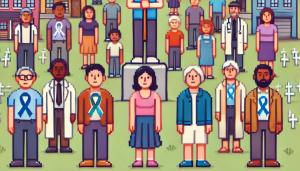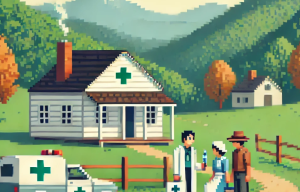
The 1950s WHO Drug Plan That Supplied 70% of India’s Penicillin
In the late 1940s, just as the world emerged from war and penicillin was transforming medicine, the newly formed World Health Organization (WHO) tried something extraordinary. It wasn’t just about distributing medicine—it was about ensuring that every country could make life-saving drugs themselves, free from corporate secrecy and political roadblocks.
This is the story of WHO’s forgotten technology transfer program, how it nearly collapsed the organization in its infancy, and why its lessons matter as we negotiate the next global pandemic treaty.
The Fight Over Who Gets to Make Medicine
At its heart, the debate over WHO technology transfer history asks a deceptively simple question: Who should manufacture health products, and who should get first access during a crisis?
Today, many governments and pharmaceutical companies prefer “voluntary” sharing—companies choose whether and when to give others access to their know-how. But during the founding years of WHO, the stakes were far higher.
In 1949, WHO tried to help countries build their own antibiotic factories. The logic was clear: when lives depend on a medicine, no nation should be forced to wait for imports or beg for licenses. Yet the United States refused to let WHO buy key manufacturing equipment for member states, citing political tensions. Poland and several allies accused wealthy nations of hoarding life-saving science, going so far as to say this secrecy violated the WHO’s constitution.
The First Crisis That Nearly Sank WHO
By 1950, frustration boiled over. Eight countries announced they were leaving WHO, charging that it had failed to deliver on its promise to share medical advances. Romania criticized WHO’s inability to spread “scientific progress in medicine,” while Poland condemned both the U.S. and WHO for bowing to political pressure.
Facing an existential crisis, WHO launched an ambitious antibiotics program: public, non-profit drug factories built with shared technology, local training, and open science principles. The goal was nothing less than a global network of self-sufficient medicine producers.
Penicillin for the People
One of the most inspiring chapters came from India. In 1951, after tense negotiations involving WHO, UNICEF, and Indian Prime Minister Jawaharlal Nehru, Hindustan Antibiotics Ltd (HAL) was born. Within seven years, the factory was producing 35 million mega-units of penicillin annually—enough to cover 70% of India’s needs.
Nehru’s philosophy was blunt: “Science did not flourish on methods of secrecy. It was wrong to allow private firms to keep processes of preparing medicines a secret.”
For a time, WHO’s vision looked unstoppable. Factories weren’t just making medicine; they were training grounds for other countries, spreading know-how like seeds on the wind.
How the Dream Unraveled
The program’s success drew resistance. Domestically, Indian industrialists disliked state control. Internationally, the U.S. pushed India to sign deals with American pharmaceutical giants like Merck—contracts that limited what Indian scientists could learn and required hefty royalty payments.
Some of these partnerships were downright cynical. In one case, Merck promised to share any improvements in streptomycin production. Years later, they withheld a more efficient strain, claiming they had purchased it rather than developed it—therefore dodging the contract.
By 1953, WHO’s antibiotics program had grown so large it resembled an industrial operation more than a health agency service. That same year, budget cuts hit hard. The program was handed to another UN body, which lacked the political will to maintain its radical open-science approach.
History Repeats: From Penicillin to COVID-19
If this story feels eerily familiar, it’s because the same battle lines remain. During COVID-19, WHO created the mRNA Technology Transfer Hub to help countries make their own vaccines. But just like in the 1950s, pharmaceutical companies largely refused to share, and only one firm joined WHO’s COVID-19 Technology Access Pool.
Trade agreements and intellectual property contracts keep public manufacturers like Brazil’s Bio-Manguinhos from fully participating. And looming over it all is the threat of lawsuits from patent holders.
Why This Forgotten History Matters Now
WHO’s antibiotics program proved that public-public partnerships—countries working together without corporate gatekeeping—could work. It also showed how quickly such efforts can be undermined by political pressure, industry lobbying, and funding cuts.
The fact that WHO itself leaves this program out of its official histories is telling. When past equity-driven successes are forgotten, they can’t serve as precedents for bold policy today. We risk accepting artificial scarcity as inevitable, rather than challenging it.
As countries debate the Pandemic Agreement, they face a choice: keep relying on the voluntary goodwill of industry, or revive a model rooted in solidarity, open science, and public manufacturing. The history is clear—what’s missing is the political will.
What’s Next?
To make technology transfer real, countries could:
- Commit funding to build and sustain public manufacturing hubs.
- Establish legal frameworks that compel—not just request—sharing during health emergencies.
- Create global open-knowledge repositories for essential drug and vaccine production.
These steps wouldn’t just prepare us for the next pandemic—they’d also chip away at the deep inequities in global health access.
Join the Conversation
If WHO’s 1950s program had survived, would today’s vaccine inequality look different? Should public manufacturing be part of every country’s pandemic plan? And how can we stop history from repeating itself?
Your thoughts could help shape how we remember—and perhaps resurrect—this lost vision.



